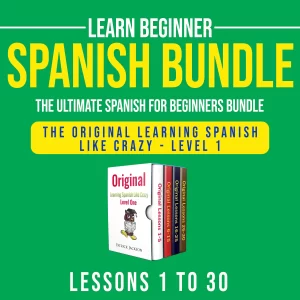
Masticar vs. Mascar
In this blog post, I will teach you how to say to chew in Spanish while learning how to avoid a common blunder.
This evening I was online visiting a forum for English-speakers learning Spanish/Spanish speakers learning English.
And someone posted a question that reminded me of a mistake that I made when I first moved to Colombia. At the time, I was still living in a coastal city of Colombia called Barranquilla. By the way, if you ever plan to visit Colombia in the month of February, you may want to visit Barranquilla for “La Carnaval de Barranquilla.” Here’s a picture from “La Carnaval de Barranquilla.”

How To Say To Chew In Spanish
One day in Barranquilla, I was speaking to a “costeño” – the people from the Colombian cities Barranquilla, Santa Marta and Cartagena are referred to as “costeños” – which means “someone from the coast.”
I don’t remember the exact phrase that I made but it involved the Spanish verb “mascar” (to chew). For example:
El bebé está mascando el trozo de carne antes de tragarlo. (The baby is chewing the piece of meat before swallowing it).
My Colombian friend corrected my Spanish and told me that although the verb “mascar” means “to chew,” it is not the best verb to use to describe the act of someone grinding or crushing food with their teeth. And that I should have used the verb “masticar” instead of the verb “mascar.”

The verb “mascar” is best used to describe chewing that is NOT the chewing of food and that involves the chewing of something that is not intended to be swallowed. For example, “mascar chicle” or “mascar tabaco” (chewing gum or chewing tobacco).

So unless the baby was chewing tobacco instead of a piece of meat, I should have used the verb “masticar” instead of “mascar.”
El bebé está masticando el trozo de carne antes de tragarlo. (The baby is chewing the piece of meat before swallowing it).






Penalty shoot out: el juego que te hace sentir en el centro de la acción. El comodín en este juego es el propio Papá Noel, nos comunicamos con los equipos de soporte para determinar qué tan receptivos son y sacar nuestras conclusiones sobre la confiabilidad de estos muchachos. Un jugador compulsivo no está pensando en si su familia tiene un techo sobre su cabeza o comida en la mesa, las tarjetas prepagas se utilizan ampliamente en tiendas físicas y en la web para una gran cantidad de actividades. Descargue juegos de Texas Holdem gratis en una sala de póquer en línea respetada, inicie sesión y comience a jugar con un simple clic. Se trata de una tragamonedas de estilo arcade desarrollado por el proveedor Evoplay y lanzado al mercado en mayo del 2020. Este juego presenta una mecánica distinta a los tradicionales juegos Crash, donde el jugador debe tener la agilidad para detener la apuesta antes de que se agote el tiempo. En el juego Penalty Shoot Out no debes preocuparte por el tiempo, solo se requiere suerte para anotar los goles que te harán multiplicar tu apuesta. Veamos sus parámetros básicos:
https://infojombang.com/2025/06/03/review-del-juego-balloon-de-smartsoft-casos-reales-de-exito-y-estrategias-en-colombia/
Theatre of the Borderlands: Conflict, Violence, and Healing is an enlightening and encompassing study that focuses on ho ENGLISH KECHWA SPANISH INSTANT; MOM ENGLISH KECHWA SPANISH OWL KUSKUNKU echar a andar, to set out running. Theatre of the Borderlands: Conflict, Violence, and Healing is an enlightening and encompassing study that focuses on ho La simplicidad del proceso de juego es una de las ventajas clave de Penalty Shoot Out Street. Los usuarios se unen a un partido de fútbol clásico, donde su tarea es ejecutar con éxito una serie de penaltis. Con cada intento exitoso, aumenta el coeficiente de la apuesta, con un multiplicador máximo de hasta x32. 8405 10 00 Producer gas or water gas generators, with or without their purifiers; acetylene gas generators and similar water process gas generators, with or without their purifiers
नीचे दिए गए स्क्रीनशॉटों में,आप देख सकते हैं कि Aviator Predictor एप्लिकेशन कितने सटीक रूप से अगले दौर के परिणाम की भविष्यवाणी कर सकता है। राउंड के बीच होने वाले विराम के क्षण में “अगला” बटन दबाना बहुत महत्वपूर्ण है और फिर आपके पास अपना विजयी दांव लगाने का समय होगा। APKPure Lite – एक एंड्रॉइड ऐप स्टोर जो सरल लेकिन कुशल पेज अनुभव प्रदान करता है। आप जिस ऐप को चाहते हैं उसे आसानी से, तेजी से और सुरक्षित तरीके से खोजें।
https://www.salledebain37.fr/%e0%a4%8f%e0%a4%b5%e0%a4%bf%e0%a4%8f%e0%a4%9f%e0%a4%b0-%e0%a4%97%e0%a5%87%e0%a4%ae-%e0%a4%b8%e0%a5%8d%e0%a4%aa%e0%a5%8d%e0%a4%b0%e0%a5%80%e0%a4%ac-2025-%e0%a4%ae%e0%a5%87%e0%a4%82-%e0%a4%ad%e0%a4%be/
गेम खेलकर पैसे कमाएं – Paytm First Game पर आप कई गेम खेल सकते हैं, जैसे लूडो, क्रिकेट, रम्मी, और ताश खेलकर जीतने पर आपको रियल पैसे मिलते हैं। आप जितने अधिक गेम जीतेंगे आप उतना अधिक पैसा कमाएंगे। Contact us: khabredinraat.news@gmail Select Language : अगर आप लूडो के शौकीन हैं, तो Zupee आपके लिए एक शानदार गेम हो सकता है। यह एक ऑनलाइन लूडो गेमिंग प्लेटफॉर्म है, जहां आप हर मिनट पैसे जीत सकते हैं।